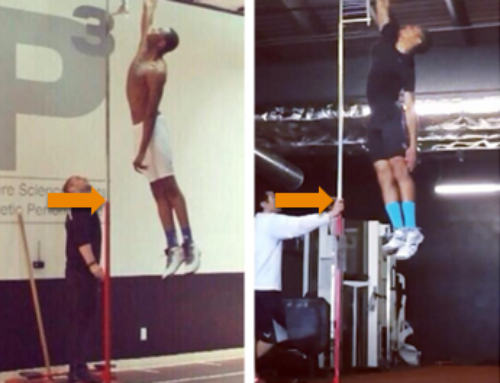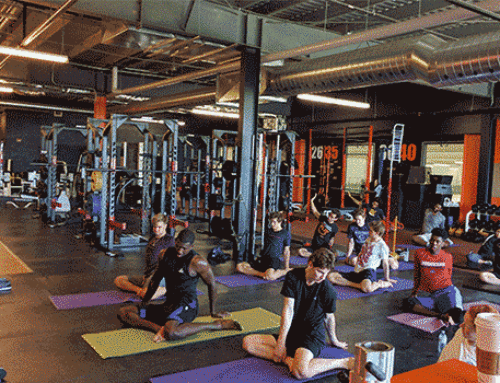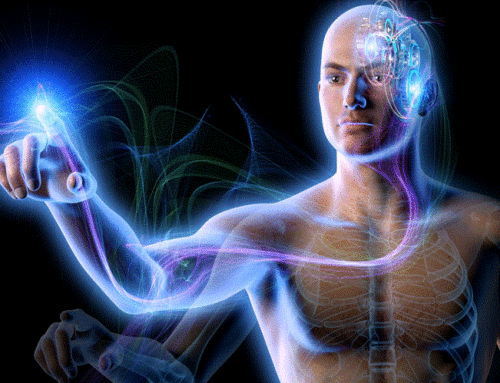
- There is a link between athletic pubalgia (AP) / sports hernia (SH), tendon pain and FAI[1-4]
- Weakness of the posterior abdominal wall is a proposed factor for AP / SH and increases stress across the bony hemiplevis – this weakness has been proposed to increase load to factors that lead to FAI[2]
- There is a link between hip adductor weakness and hip adductor strains[5, 6]
- FAI is a causative factor for labral tears and / or articular cartilage damage and subsequent hip osteoarthritis
- We know that the “at risk position” of hockey skating is the push-off (hip external rotation) and recovery (hip internal rotation) for factors known to cause impingement of the femoral neck against the acetabulum
- There is an exposure / maturation association between overuse and recurrent contact (microtrauma) between the femoral epiphysis and the acetabulum from repetitive motion leading to increasing alpha angle and years of hockey playing
- FAI is painful and can limit athletic function due to well established decreased hip range of motion (IR)
- FAI and AP and AS can all be misdiagnosed for each other
- Limited ROM and dysmorphology of the hip joint have been detected in athletes with osteitis pubis


References
- Economopoulos, K.J., et al., Radiographic evidence of femoroacetabular impingement in athletes with athletic pubalgia. Sports Health, 2014. 6(2): p. 171-7.
- Hammoud, S., et al., The recognition and evaluation of patterns of compensatory injury in patients with mechanical hip pain. Sports Health, 2014. 6(2): p. 108-18.
- Hammoud, S., et al., High incidence of athletic pubalgia symptoms in professional athletes with symptomatic femoroacetabular impingement. Arthroscopy, 2012. 28(10): p. 1388-95.
- Sansone, M., et al., Can hip impingement be mistaken for tendon pain in the groin? A long-term follow-up of tenotomy for groin pain in athletes. Knee Surg Sports Traumatol Arthrosc, 2014. 22(4): p. 786-92.
- Tyler, T.F., et al., The effectiveness of a preseason exercise program to prevent adductor muscle strains in professional ice hockey players. Am J Sports Med, 2002. 30(5): p. 680-3.
- Tyler, T.F., et al., The association of hip strength and flexibility with the incidence of adductor muscle strains in professional ice hockey players. Am J Sports Med, 2001. 29(2): p. 124-8.




